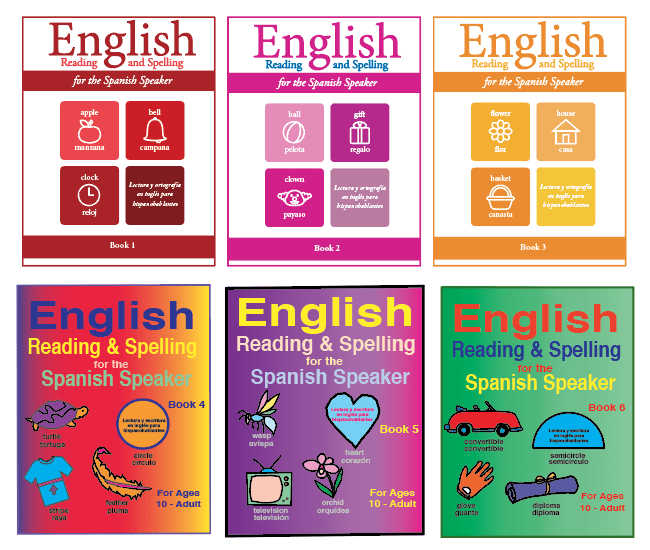Fisher Hill has a six workbook series called English Reading and Spelling for the Spanish Speaker. This reading and spelling ESL workbook series
The workbooks are bilingual since the word list for each lesson is presented in English and Spanish. There are pictures to go with many of the words in the lists. Each lesson emphasizes one or two new speech sounds. The vowel sounds in English are different than those in Spanish, but many of the English consonant sounds are similar to those in Spanish. Most consonants in English have one sound. Vowels can make several speech sounds. Sometimes the letter “y” is used as a vowel.
Words are made up of syllables (units of pronunciation). Some words have one syllable, others have two or more syllables. Every syllable must have a vowel sound. If a word has three syllables then it has three vowel sounds.
Each lesson’s word list begins with words that contain the speech sound that is being emphasized in that lesson. The last two words in the list are sight words.
Practicing English speech sounds, sight words, and their spellings will help Spanish speakers learn English reading and spelling.
In English Reading and Spelling for the Spanish Speaker Books 4, 5, and 6, prefixes and suffixes are introduced and practiced.
On our website, there are placement tests to determine which level a student should begin. A student needs a score of 80% on the placement test to go to the next level. For example, if a student gets 60% on the placement test for level one, then that student needs to begin with level one with English Reading and Spelling for the Spanish Speaker Book 1. Each level begins with the Reading and Spelling workbook.
These placement tests can be found under Teacher Resources on our website www.Fisher-Hill.com. Teacher Resources can be found on the top tool bar. Click on Teacher Resources, then click on Reading and Spelling. Then scroll down to the placement tests. The placement tests are called Sound Spelling Placement Test Book 1 and so forth. Sound Spelling Placement Test Book 1 is for level one. The Sound Spelling Placement Tests are spelling tests to determine if a student has mastered the sounds for that level. The teacher or volunteer gives the spelling test to the student. There are also student test forms under Teacher Resources.
There are other teacher resources for these reading and spelling ESL workbooks on our website. There

Visit us
